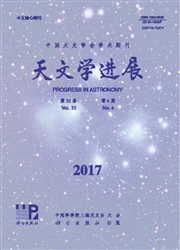

 中文摘要:
中文摘要:
电离层延迟改正模型通常可以分为广播星历用的预报模型、广域差分用的实时模型、后处理模型3类,不同应用要求需要选择不同的模型。主要比较分析了几种常用的电离层延迟改正模型:用于广域差分中生成格网模型的三角级数模型、多项式模型、低阶球谐函数模型等都可以获得很好的改正效果,且这3种模型基本上是等价的;电离层延迟谐函数展开模型可以用来分析电离层长时间系列的变化特征;国际电离层参考模型IRI的改正精度一般可以达到60%的效果;而GPS星历采用的Klobuchar模型的参数设置存在一些不足,对此提出了一些改进措施。
 英文摘要:
英文摘要:
Usually, the ionosphere delay models can be sorted as three types--the forecast model, the real-time model and the post-processing model. Different purpose for the application of these models is required to choose one that can be used to correct the ionospheric delay efficiently. Here we compare several ionosphere delay models often used, such as the functional modcl uscd for Wide Area Augmentation System (WAAS) trigonometric series function, polynomial model, and low degree spheric harmonics function. The three models are roughly equivalent to each other in the ionosphere delay correcting for WAAS. The TEC harmonic expansion trend function can be used to analyze the long-trend variations of thc ionosphere. The International Ionosphere Reference (IRI) model, as an empirical one, can reach 60 percent of the correcting effect. The Klobuchar model as the CPS broadcast model can also achieve same effect although there are some shortcomings in the parameters setting. This model will be discussed here and some improving methods are presented.
 同期刊论文项目
同期刊论文项目
 同项目期刊论文
同项目期刊论文
 期刊信息
期刊信息
